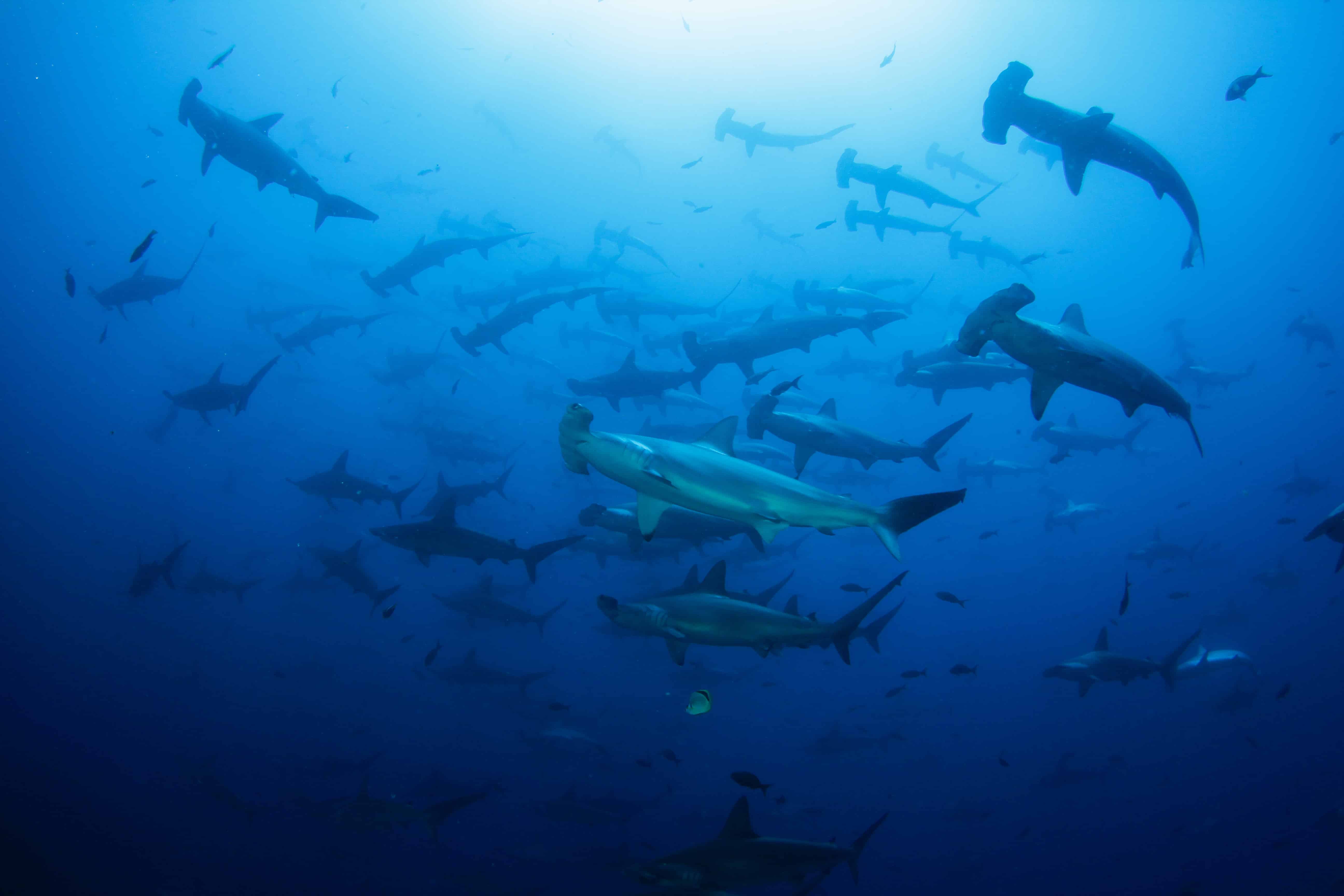At the UN Oceans Conference in Nice, France, which Costa Rica is co-sponsoring, President Rodrigo Chaves Robles has an opportunity to make history by completing protection of the Cocos-Galapagos Swimway, a bilateral migratory corridor for endangered marine species, that would help strengthen the protection of two UN Biosphere Reserves: Cocos Island National Park, and Ecuador’s Galapagos National Park and Marine Reserve.
Studies providing the scientific and economic justifications for protecting the Cocos-Galapagos Swimway, a chain of seamounts that facilitates biological connectivity between these important marine ecosystems have been completed by an international group of marine scientists among which the regional science network, MigraMar has been a key contributor.
Now, scientists and NGOs are calling for the strict protection of this critical migration corridor to help protect and recover highly migratory species of endangered sea turtles and sharks that currently are caught and killed in fishing operations throughout the region.
Ecuador took action in early 2022, creating the Hermandad Marine Reserve off Galapagos, expanding a no-fishing zone to the border of Costa Rica’s Economic Exclusive Zone around Cocos Island.
While Costa Rican President Carlos Alvarado expanded the size of Cocos Island National Park’s marine protected area to 54,844 square kilometers, making it 27 times larger, it is still not connected to the Galapagos Reserve, and thus does not afford protection to the migrating sharks and turtles moving between Cocos and Galapagos.
Without safeguarding their migratory routes from Cocos to Costa Rica’s maritime border with Ecuador, biological connectivity between these two biodiversity hotspots has yet to be ensured.
There is a simple solution: Make the part of Costa Rica’s Bicentennial Marine Management Area, which does stretch from Cocos Island National Park to the border of Costa Rica’s EEZ with Ecuador a strict no-fishing area. The Marine Management Area was declared in 2022, but to date Costa Rica has issued no measures to protect and regulate these important waters.
At present, fishing operations continue unabated in the Bicentennial Marine Management Area and thus there is no protection for endangered turtles and sharks.
Costa Rica must do its part and safeguard biological connectivity by fully protecting the Cocos Galapagos Swimway through restrictions to fishery operations in the Bicentennial Marine Management Area. This would offer a unique opportunity to develop one of the world’s first transboundary fully marine protected area designed to safeguard the migratory pathways of endangered marine species.
Protecting iconic species such as critically endangered hammerhead sharks and leatherback sea turtles, as well as endangered whale sharks, green turtles and thresher sharks that use the Swimway, will safeguard the ecological integrity of these two incredibly important biodiversity hotspots.
The Cocos-Galapagos Swimway will provide the protection that is so important to the ecological resiliency of Cocos and Galapagos Islands, both of which are United Nations Natural World Heritage Sites. The Cocos-Galapagos Swimway will not only protect endangered marine species, it will provide resilience to climate change, protection from illegal fishing, and creating a bluer economy.
Furthermore, the full protection of the Cocos-Galapagos Swimway will create a new paradigm for marine species conservation and will highlight the proactive efforts that cooperation between nations that share highly migratory species that know no political boundaries, thus advancing new way of thinking about protecting these jeopardized species.
On behalf of hundreds of scientists, non-governmental organizations, its millions of members of the public, we urge Costa Rica to take this historic action. The citizens of the world will thank you.
Dr. Randall Arauz (CREMA, Costa Rica)
Todd Steiner (Turtle Island Restoration Network, US)
Dr. Alex Hearn (Universidad San Francisco de Quito, Ecuador)
MigraMar Scientists and Mission Blue Hope Spot Champions for Cocos Island, Cocos-Galapagos Swimway, and Galapagos Islands
This article is an opinion piece. The views expressed are those of the authors and do not necessarily reflect the editorial position of the Tico Times.






